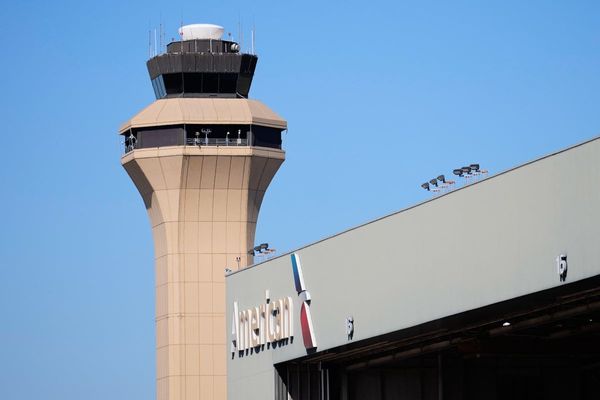
A police officer who followed a BMW before it crashed into a tree, killing the driver, has denied he was in pursuit of the vehicle before the incident, an inquest has heard.
Muhammad Qasim’s vehicle came to the attention of Pc Paul Withers of West Midlands Police in the early hours of October 2 2023 because it was speeding, the officer told an inquest into the 29-year-old’s death.
Mr Qasim died of “catastrophic” head injuries at the Queen Elizabeth Hospital in Birmingham hours after his BMW failed to negotiate a left-hand bend and crashed into a tree on a central reservation on Island Road in Handsworth.
The inquest, in front of a jury of four women and seven men at Birmingham Coroner’s Court, heard on Wednesday that Mr Qasim had been one and a half times over the drink-drive limit, had recently used cannabis and was not wearing a seatbelt at the time of the collision.
On Thursday Pc Withers, a standard response grade driver since 2009 and frontline police officer for 23 years, said he was not trained to carry out police pursuits and had only followed Mr Qasim’s BMW just after 2am after he saw it going “easily double” the 30mph speed limit on Church Lane to get intelligence on the car.
Pc Withers and his colleague had been heading back to Park Lane police station having picked up food from McDonald’s when they spotted Mr Qasim’s blue BMW on the opposite side of the road.
He said he decided to “investigate” and turned around to follow because he knew Mr Qasim was heading towards a traffic junction where the police officer had just seen pedestrians and believed there could be a danger to public.
Having reached the end of Island Road and losing sight of the BMW, Pc Withers said he had informed the control room he had lost the car before turning right and then right again, contravening a “no right turn” lane to head back the way he came with the intention of returning to the police station.
He then saw Mr Qasim’s BMW again on the opposite side of the road and made another U-turn to follow it, saying he was “shocked” to have seen it again before it went out of sight once more.
He told the inquest: “I thought, considering the manner of driving, that if the driver had something to hide, he wouldn’t stay local knowing there’s a police car in the vicinity, he would expand his route.
“I was perplexed by the behaviour of (the) driver, I didn’t understand why he would carry on with the manner of driving when he had the opportunity to expand his route away from me.
“I anticipated that it would be halfway to the M5 and gain maximum distance away from me.”
Pc Withers said Mr Qasim had not altered his driving in any way and that he did not believe the presence of a police car had negatively impacted the way the BMW was being driven.
He said: “If he was fleeing, he had opportunity to distance himself significantly, instead he has done reciprocal turns at the first opportunity which would put us back in close proximity to one another. He had done that on more than one occasion.
“It is not the kind of behaviour I have experienced with drivers who are attempting to distance themselves from a marked vehicle. I was confused what it was trying to achieve.”
He added: “I did consider my presence may have had an influence on the car, but I did try to maintain my speed, I tried to be the least intrusive I could be throughout the entire incident.”
Pc Withers said he was only following Mr Qasim’s car to get more details so database checks could be run on it and that traffic officers who were trained to pursue the vehicle were nearby and would be at the scene “momentarily”.
He said: “It’s not unusual for cars to have information markers on them if linked to criminality, for drugs or firearms, which would give us an indication if it is worth a stop.
“Quite often when vehicles have those markers, suitably trained firearms officers would do that stop and I wouldn’t want us in the vicinity of that. It was impossible to tell at that stage.”
According to Authorised Professional Practice guidance for police forces, the definition of a pursuit is when a car or motorcycle, by their actions or their continuance of their manner of driving, refuses to stop and that the police driver believes the subject vehicle driver is aware of a requirement to stop and the police driver continues to drive behind the vehicle to report its progress or to stop it.
Asked by counsel to the inquest Bridget Dolan KC if he believed he was in pursuit of Mr Qasim’s vehicle, Pc Withers said no, saying he was maintaining his speed and did not have his blue lights activated having turned them off when he first lost the BMW.
He said: “His behaviour was unusual, not what I would expect if he was trying to evade me. The distance between us would’ve been the width of the central reservation, we were in that space together for a couple of seconds at best.
“I had not indicated my blue lights or my horn or indicated him to stop.”
After a third turn in the road was made and the police car followed in the same direction, Pc Withers said the next time he saw the BMW was when he happened upon the scene of the collision further down the road.
He said: “Right up to the last point of being in close proximity, he appeared to be in control.
“He negotiated the turns without issue, I had no evidence of him being unable to control (the car), no swaying, no weaving, nothing to cause me concern other than speed.
“I was trying to understand what he was trying to achieve.
“For the lion’s share of this interaction, the BMW had not been in my presence. I had very little time to try and assess what he was trying to do, what the outcome would be. It didn’t make any sense to me at the time.”
The inquest continues.
Minister says she will ‘sort out’ HS2 and confirms opening will be delayed
Youth accused of killing Leo Ross told his trial will not take place next week
Man who filmed himself raping woman has ‘unduly lenient’ sentence increased
Friend tells of terror before 100mph car crash that killed Lillie Clack







